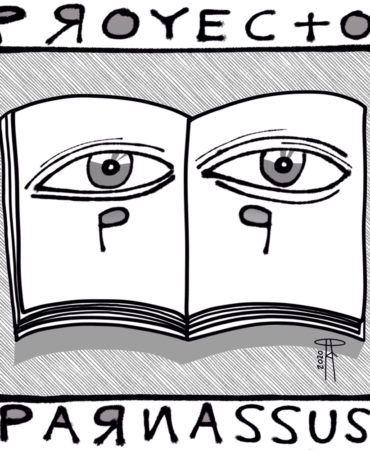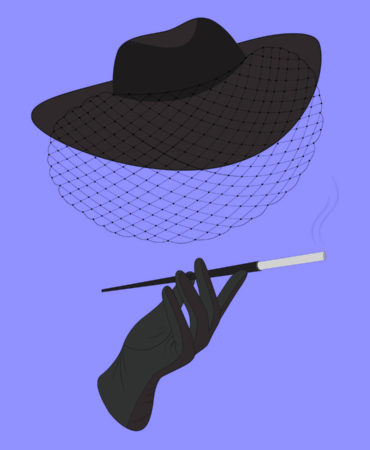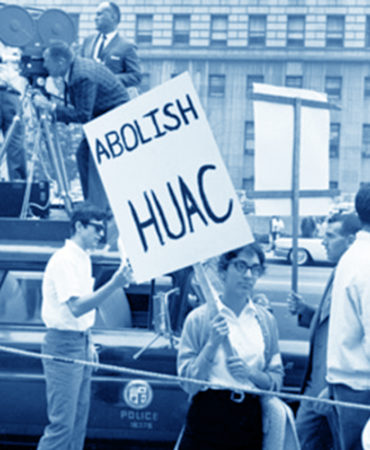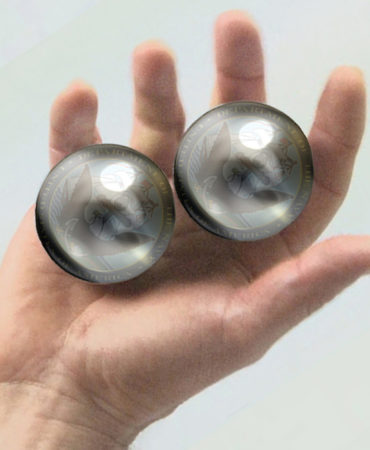
Two Dads
In this ten-minute play, David Auburn gives us two men in vacation clothes sitting on deck chairs — perfect strangers, relating their troubled relationships with their children, looking for solace […]

is the first dedicated bilingual podcast channel for San Miguel de Allende.
SMA Podcast es el primer canal de podcast bilingüe en San Miguel de Allende.
Just added: Two Plays by David Auburn, author of the Pulitzer-winning Proof. We present two one-act dramas by Auburn, each with two characters — one in English, and the other in a new Spanish translation.
Agregado recientemente: Dos obras de David Auburn — dos dramas en un acto, ambos con dos personajes, uno en inglés y el otro en una nueva traducción al español.
We are back in the recording studio preparing Season 2 of our literary series, the Parnassus Project — actors reading great literature.
Estamos de regreso en el estudio de grabación preparando la segunda temporada de nuestra serie literaria Proyecto Parnassus: Actores interpretando grandes obras de la literatura.

+ 4 more


+ 2 more

<b>By Michael Hollinger Cast</b> (in order of speaking) <b>Jim Newell</b> Malcolm Geary <b>Chloe Bronzan</b> Schuyler Baines <b>Moises Alzuro</b> Pedro, Tour Guide, Pepinero <b>Erik Zavala</b> Carlos Zavala <b>Marcela Brondo</b> Ana Ortega <b>Pepe Pimentel</b> Gonzalo Reyes <b>Christian Baumgartner</b> Mendoza, Pepinero <b>Mario Moya</b> Park Service Agent, Tito, Pepinero <b>Rodrigo Demian</b> Jorge, Pepinero <b>Directed by Fredric Dannen</b> Technical Direction & Sound Effects: <b>Chuck Rubin</b> Casting & Assistant Direction: <b>Marcela Brondo</b> Staff: <b>Gerardo Charreton, David T. Russell, Gina Giampaoli Performed at the San Miguel Playhouse, March 2017</b>

<b>By Jeffrey Hatcher</b> <b>Cast</b> <b>Judy Newell</b> as Virginia Carpolotti Directed by <b>Fredric Dannen</b> Stage manager <b>Jim Newell</b> Sound <b>Gerardo Charreton</b> <b>Performed at the San Miguel Playhouse, January 2018</b> Judy Newell portrays Virginia Carpolotti, a widow in her late 60s, in Jeffrey Hatcher’s <i>Thirteen Things About Ed Carpolotti</i>, the touching and often hilarious story of a woman who has just inherited her deceased husband’s business. The 1996 play was the final installment in Hatcher’s triptych <i>Three Viewings</i>, three monologues set in the same funeral parlor in an unnamed Midwestern town. Hatcher is an American playwright and screenwriter. His plays include <i>Compleat Female Stage Beauty</i>, and a stage adaptation of <i>Tuesdays with Morrie</i>. He wrote the screenplay <i>Casanova</i> for director Lasse Hallstrom, as well as the screenplay for the 2008 film <i>The Duchess</i>. Alabama native Judy Newell began acting in Montgomery at age 14, and studied theater at the University of Alabama. She became a travel professional and pioneered tourism in the Galapagos Islands, Ecuador, where she lived for seventeen years. In 1986, Judy moved to Los Angeles, resumed her acting studies with Tony Barr and David Paymer, and became a member of AFTRA and the Screen Actors Guild. She acted in television commercials, soap operas, and theater, and met her future husband, Jim Newell. The Newells settled in San Miguel de Allende, Mexico, in 2006. Judy has starred in numerous Players Workshop and San Miguel Playhouse productions, including <i>Driving Miss Daisy</i>, <i>Steel Magnolias</i>, <i>It Had to Be You</i>, and <i>Spoon River Anthology.</i>

<b>By Fredric Dannen Cast</b> <b>Lola Smith</b> as Helen Goldman Directed by <b>Fredric Dannen</b> Stage manager <b>Jim Newell</b> Sound <b>Gerardo Charreton</b> <b>Performed at the San Miguel Playhouse, January 2018</b> In May 1947, the House Un-American Activities Committee, known as HUAC, began a crusade against the motion picture industry. HUAC had recently become a permanent congressional body, thanks in large part to Mississippi congressman John E. Rankin, a virulent racist and anti-Semite, who claimed that a Communist plot to overthrow the government of the United States had its “headquarters in Hollywood.” Over the next decade, scores of actors, directors, screenwriters, and other movie people were summoned before HUAC and ordered to disclose whether they now or in the past had been Communist Party members, and to give up the names of fellow members. Ten men, including screenwriters Ring Lardner, Jr., and Dalton Trumbo, defied the committee and went to jail. Others refused all questions on Fifth Amendment grounds, and were blacklisted, unable to work for any of the studios. Many cooperated by giving up the names of their friends. This dark period in American history is the backdrop for <i>The Cauldron of Fire</i>, a dramatic monologue which received its world premiere in January 2018 at the San Miguel Playhouse. The play takes place in January 2018, in the Boyle Heights, Los Angeles, apartment of Helen Goldman. Helen Goldman, a former Hollywood screenwriter, is a woman of Russian-Jewish descent born in New York City in 1920. Now 97 and one the last survivors of the Hollywood blacklist, Helen has arranged a fateful meeting with another survivor, a director. Goldman was a non-cooperator who went to prison; the director, meanwhile, named names, and continued with his career. Fredric Dannen wrote the play specifically for theater veteran Lola Smith. Lola has been performing on stage since the age of four and a half. A New York native, she joined the fabled Bird-on-a-Cliff Theater Company in Woodstock in 1946, working alongside luminaries such as Jose Quintero and Theodore Mann. After marrying banker and sometimes actor Martin Smith, Lola relocated to Brazil, and performed with a thriving English-language theater company in Sao Paulo. On returning to New York in the late 1960s, she continued acting with an Off-Off-Broadway regional theater group. Lola settled in San Miguel in July 1986, and almost immediately became an assistant to Robert Somerlot, head and co-founder of Players Workshop. She joined the Players Workshop board, starred in over twenty-five of the company's productions, and directed as many.

<b>By Herman Wouk </b> <b>Cast </b> (in order of speaking) <b>Fil Formicola </b> Lt. Stephen Maryk, Signalman (3rd Class) Julius Urban <b>Fredric Dannen </b> Lt. Barney Greenwald <b>John Wharton </b> Lt. Com. Jack Challee <b>Howard Platt </b> Captain Blakely <b>Don Krim </b> Lt. Com. Philip Francis Queeg, Capt. Randolph Southard <b>Harold Dean James </b> Lt. Thomas Keefer, Dr. Bird <b>David Galitzky</b> Lt. (Jr. Grade) Willis Seward Keith, Dr. Forrest Lundeen, Stenographer Directed by <b>Chuck Rubin </b> <b>Performed at the San Miguel Playhouse, July 2016</b> The courtroom drama has been a theatrical staple for centuries, stretching back to Shakespeare’s <i>The Merchant of Venice</i> and even, if you consider the Greek chorus as an unsworn jury, Sophocles’ <i>Oedipus the King</i>. In more modern times, Broadway has had its share of courtroom dramas, from <i>Inherit the Wind</i> to <i>A Man for All Seasons</i>, but only in a few instances has virtually the entire play taken place in the courtroom. Two good examples of the latter both involve military courts: Saul Levitt’s <i>The Andersonville Trial</i>, and Herman Wouk’s <i>The Caine Mutiny Court-Martial</i>. Theatergoers with training in law often squirm a bit when they attend a legal-themed play (or, for that matter, movie), because in many instances, the playwright or screenwriter has exhibited no regard for authentic courtroom procedure. Herman Wouk (who died in May 2019 just days before his 104th birthday) did his homework. A naval reserve officer in World War II who served as executive officer aboard the U.S.S. Southard, and was decorated for valor, Wouk knew how Navy men talked; but he had no legal training, and there was no template for a World War II court-martial trial for mutiny, as none had actually occurred. Wouk scrupulously read the 588-page manual called <i>Naval Courts and Boards</i>, and apart from certain minor omissions for the sake of brevity, the action of <i>The Caine Mutiny Court-Martial</i> strictly adheres to courtroom regulations as practiced in 1945, the time of the play. Wouk also studied psychoneurotic case histories in creating the character of Captain Queeg — but let’s not give away the plot. Act One: The Prosecution Act Two: The Defense The time of the play is February 1945. The scene is the General Court-Martial Room of the Twelfth Naval District, San Francisco. At the end of Act Two the scene shifts to a banquet room in the Hotel Fairmont, San Francisco.


In this ten-minute play, David Auburn gives us two men in vacation clothes sitting on deck chairs — perfect strangers, relating their troubled relationships with their children, looking for solace […]

¿De qué sirve mirar un planeta a 600 millones de millas de distancia cuando no puedes ver lo que hay frente a ti? Esa pregunta es el punto central de […]

Eduardo Galeano nació en Uruguay y vivió exiliado en Argentina y España, después de que fuera encarcelado y añadido a la lista de los condenados por Videla durante las dictadoras […]

Marjorie Burren reads “Theft,” by Katherine Anne Porter. Texas-born journalist and author Porter may be best known for her 1962 best-selling novel Ship of Fools, but her reputation today rests […]

Con su inigualable toque de humor y melancolía, Lucía Berlín hace eco de su vida, asombrosa y convulsa, con relatos tan reales que parecen fotografías en movimiento. Sus personajes luchan […]

Richard Fink reads John Cheever’s “The Swimmer,” a modern myth that surely stands as one of the greatest works of short fiction by an American writer. Fancying himself an explorer […]

Gabriel García Márquez, Premio Nobel de Literatura en 1982, fue un escritor colombiano que alcanzó notoriedad mundial con la publicación de su novela Cien años de soledad. Como autor de […]

Henrietta Weekes reads Anton Chekhov’s “The Lady with the Little Dog.” While vacationing in Yalta, the cynical, philandering Dmitri Gurov meets and seduces Anna Sergeevna, a young woman, who, like […]

Rosario Castellanos fue una de las principales escritoras del siglo XX mexicano y del llamado Boom Latinoamericano. Autora de una vasta obra narrativa, dramática y poética, es conocida principalmente por […]

William Slusser reads Ambrose Bierce’s “An Occurrence at Owl Creek Bridge,” one of the most famous short stories in American literature. Bierce’s Civil War tale, originally published in 1890 in […]